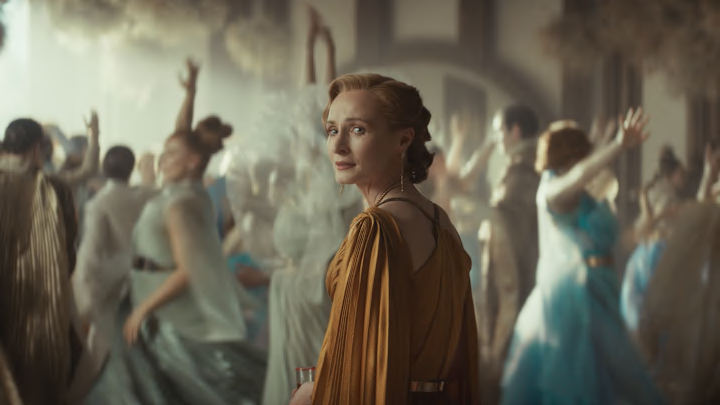Trigger warning: This article mentions sexual assault and alcohol abuse.
As a storyteller, I've always believed that the most difficult scenes to watch or listen to or read are often the ones we need to pay attention to most. The exception is almost always unnecessary violence -- I'm looking at you, Game of Thrones. If it's a significant plot point, I'll tolerate it. But vulgarity for the sake of shock value has always turned me off to an ever-growing list of media projects.
It's not often that you find a TV show that can take a brutal, violent scene -- one featuring a powerful man approaching a lone woman with ill intent -- and turn it into an important, thought-provoking moment. Tony Gilroy's Andor -- yes, a Star Wars show; yes, set a long time ago in a faraway fictional galaxy -- is one of the few that has not only taken on the task, but executed it brilliantly.
One of this week's season premiere episodes featured a scene in which Ferrix refugee and rising rebel Bix is forced to fight off an imperial lieutenant who tries to assault her. It's made very clear what he intends to do -- it doesn't bother to sugar-coat it. But it doesn't stop there. When the rest of the lieutenant's men approach the aftermath of the scene, she says out loud exactly what happened. Star Wars is typically quite careful about its word choices -- there are in-universe curse words to get around using real ones. But "careful" was not Gilroy's intent here.
The show, in this scene and many of its others, is very loudly asking its audience to make honest comparisons between the fictional Empire portrayed in the series and the very real rise of fascism in the real world. Including scenes like this has nothing to do with shock value. It's not shocking for effect. It's difficult to watch because it's grotesquely real. Bix is a character, but she is speaking on behalf of real people. Fighting off a powerful man for all those before her who couldn't.
Whether it's that scene, or the one featuring senator Mon Mothma drinking herself into oblivion to temporarily escape the pending horrors unfolding without her control or consent, Gilroy is trading entertainment for depth. These scenes that trigger us are the ones that speak the loudest about the truths standing right in front of us. Bix suffers because many in her position have, and will, suffer. Mon loses all sense of reality because her reality -- like ours -- is far too sinister to endure sober.
This would be a whole different article entirely if these scenes existed purely because they "could." But no one -- not even Gilroy -- wants this kind of violence and despair in their Star Wars. It exists because it has to. The story works because of these scenes, not despite them. If you could take them out and the story still flowed, then they'd have no merit. That is how you turn the most painful elements of humanity into art. Not to force audiences to endure these moments, but instead to provoke emotion; thought; perhaps even action. It is the most effective that on-screen violence perhaps has been in quite a long time.
If you or someone you know needs to reach out about sexual abuse or assault, RAINN is available 24/7 at 800-656-HOPE (4673), or online at RAINN.org.
